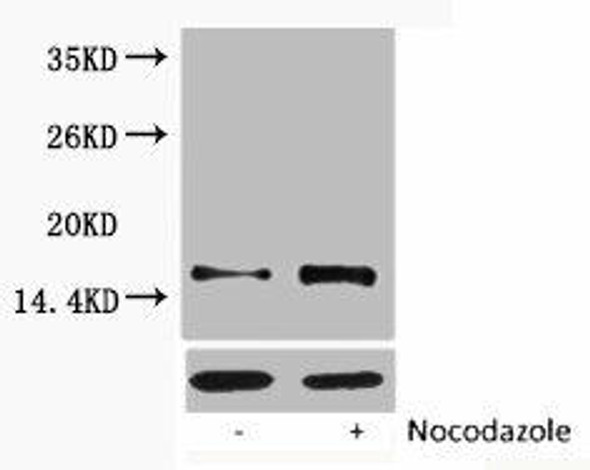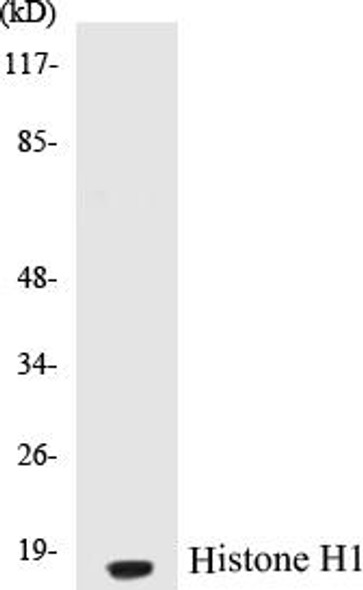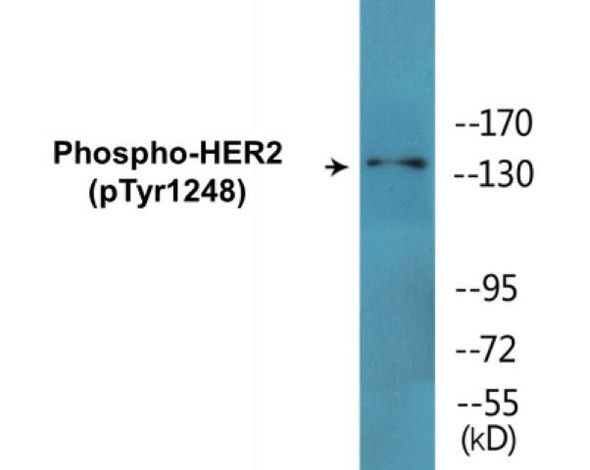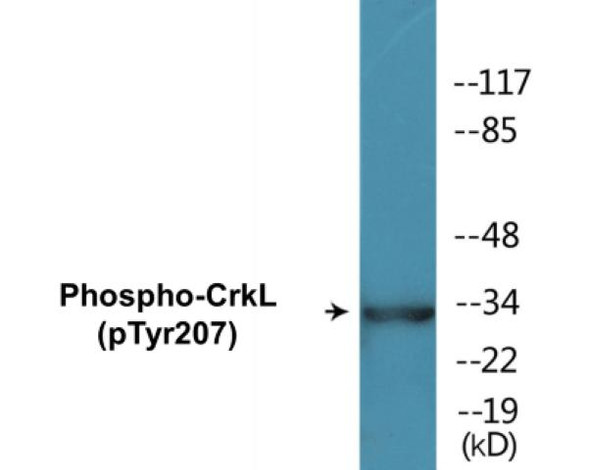Histone H1 (Phospho-Thr17) Fluorometric Cell-Based ELISA Kit
- SKU:
- FBCAB00051
- Product Type:
- ELISA Kit
- ELISA Type:
- Cell Based Phospho Specific
- Reactivity:
- Human
- Mouse
- Rat
- Detection Method:
- Fluorometric
Description
Histone H1 (Phospho-Thr17) Cell-Based ELISA Kit
The Histone H1 (Phospho-Thr17) Cell-Based ELISA Kit is a convenient, lysate- free, high throughput and sensitive assay kit that can monitor Histone H1 phosphorylation and expression profile in cells. The kit can be used for measuring the relative amounts of phosphorylated Histone H1 in cultured cells as well as screening for the effects that various treatments, inhibitors (ie. siRNA or chemicals), or activators have on Histone H1 phosphorylation.
How does our Histone H1 (Phospho-Thr17) Fluorometric Cell-Based ELISA Kit work?
Qualitative determination of Histone H1 (Phospho-Thr17) concentration is achieved by an indirect ELISA format. In essence, Histone H1 (Phospho-Thr17) is captured by Histone H1 (Phospho-Thr17)-specific primary (1°) antibodies while Dye 1-conjugated and Dye 2-conjugated secondary (2°) antibodies bind the Fc region of the 1° antibody. Through this binding, the dye conjugated to the 2° antibody can emit light at a certain wavelength given proper excitation, hence allowing for a fluorometric detection method. Due to the qualitative nature of the Cell-Based ELISA, multiple normalization methods are needed:
| 1. | A monoclonal antibody specific for human GAPDH is included to serve as an internal positive control in normalizing the target RFU values. |
| 2. | An antibody against the nonphosphorylated counterpart of Histone H1 (Phospho-Thr17) is also provided for normalization purposes. The RFU values obtained for non-phosphorylated Histone H1 can be used to normalize the RFU value for phosphorylated Histone H1. |
Histone H1 (Phospho-Thr17) Fluorometric Cell-Based ELISA Kit -Information
| Product Name: | Histone H1 (Phospho-Thr17) Fluorometric Cell-Based ELISA Kit |
| Product Code/SKU: | FBCAB00051 |
| Description: | The Histone H1 (Phospho-Thr17) Fluorometric Cell-Based Phospho ELISA Kit is a convenient, lysate-free, high throughput and sensitive assay kit that can monitor Histone H1 (Phospho-Thr17) protein phosphorylation and expression profile in cells. The kit can be used for measuring the relative amounts of phosphorylated Histone H1 (Phospho-Thr17) in cultured cells as well as screening for the effects that various treatments, inhibitors (ie. siRNA or chemicals, or activators have on HIST1H1B phosphorylation. |
| Dynamic Range: | > 5000 Cells |
| Detection Method: | Fluorometric |
| Storage/Stability: | 4°C/6 Months |
| Reactivity: | Human, Mouse |
| Assay Type: | Cell-Based ELISA |
| Database Links: | Gene ID: 3009/3007/3008, UniProt ID: P16401/P16402/P10412, OMIM #: 142711/142210/142220, Unigene #: Hs.131956/Hs.136857/Hs.248133 |
| Format: | Two 96-Well Plates |
| NCBI Gene Symbol: | HIST1H1B |
| Sub Type: | Phospho |
| Target Name: | Phospho-Histone H1 (Thr17) |
Kit Principle
Figure: Schematic representation of Assay Genie Cell-Based Fluorometric ELISA principle
Kit components | Quantity |
| 96-Well Black Cell CultureClear-Bottom Microplate | 2 plates |
| 10X TBS | 24 ml |
| Quenching Buffer | 24 ml |
| Blocking Buffer | 50 ml |
| 15X Wash Buffer | 50 ml |
| Primary Antibody Diluent | 12 ml |
| 100x Anti-Phospho Target Antibody | 60 µl |
| 100x Anti-Target Antibody | 60 µl |
| Anti-GAPDH Antibody | 110 µl |
| Dye-1 Conjugated Anti-Rabbit IgG Antibody | 6 ml |
| Dye-2 Conjugated Anti-Mouse IgG Antibody | 6 ml |
| Adhesive Plate Seals | 2 seals |
Additional equipment and materials required
The following materials and/or equipment are NOT provided in this kit but are necessary to successfully conduct the experiment:
- Fluorescent plate reader with two channels at Ex/Em: 651/667 and 495/521
- Micropipettes capable of measuring volumes from 1 µl to 1 ml
- Deionized or sterile water (ddH2O)
- 37% formaldehyde (Sigma Cat# F-8775) or formaldehyde from other sources
- Squirt bottle, manifold dispenser, multichannel pipette reservoir or automated microplate washer
- Graph paper or computer software capable of generating or displaying logarithmic functions
- Absorbent papers or vacuum aspirator
- Test tubes or microfuge tubes capable of storing ≥1 ml
- Poly-L-Lysine (Sigma Cat# P4832 for suspension cells)
- Orbital shaker (optional)
Kit Protocol
This is a summarized version of the kit protocol. Please view the technical manual of this kit for information on sample preparation, reagent preparation and plate lay out.
| 1. | Seed 200 µl of desired cell concentration in culture medium into each well of the 96-well plates. For suspension cells and loosely attached cells, coat the plates with 100 µl of 10 µg/ml Poly-L-Lysine (not included) to each well of a 96-well plate for 30 minutes at 37°C prior to adding cells. |
| 2. | Incubate the cells for overnight at 37°C, 5% CO2. |
| 3. | Treat the cells as desired. |
| 4. | Remove the cell culture medium and rinse with 200 µl of 1x TBS, twice. |
| 5. | Fix the cells by incubating with 100 µl of Fixing Solution for 20 minutes at room temperature. The 4% formaldehyde is used for adherent cells and 8% formaldehyde is used for suspension cells and loosely attached cells. |
| 6. | Remove the Fixing Solution and wash the plate 3 times with 200 µl 1x Wash Buffer for 3 minutes. The plate can be stored at 4°C for a week. |
| 7. | Add 100 µl of Quenching Buffer and incubate for 20 minutes at room temperature. |
| 8. | Wash the plate 3 times with 1x Wash Buffer for 3 minutes each time. |
| 9. | Dispense 200 µl of Blocking Buffer and incubate for 1 hour at room temperature. |
| 10. | Wash 3 times with 200 µl of 1x Wash Buffer for 3 minutes each time. |
| 11. | Add 50 µl of Primary Antibody Mixture P to corresponding wells for Histone H1 (Phospho-Thr17) detection. Add 50 µl of Primary Antibody Mixture NP to the corresponding wells for total Histone H1 detection. Cover the plate with parafilm and incubate for 16 hours (overnight) at 4°C. If the target expression is known to be high, incubate for 2 hours at room temperature. |
| 12. | Wash 3 times with 200 µl of 1x Wash Buffer for 3 minutes each time. |
| 13. | Add 50 ul of Secondary Antibody Mixture to corresponding wells and incubate for 1.5 hours at room temperature in the dark. |
| 14. | Wash 3 times with 200 µl of 1x Wash Buffer for 3 minutes each time. |
| 15. | Read the plate(s) at Ex/Em: 651/667 (Dye 1) and 495/521 (Dye 2). Shield plates from direct light exposure. |
| 16. | Wash 3 times with 200 µl of 1x Wash Buffer for 5 minutes each time. |
Histone H1 (Phospho-Thr17) - Protein Information
| UniProt Protein Function: | H1B: Histone H1 protein binds to linker DNA between nucleosomes forming the macromolecular structure known as the chromatin fiber. Histones H1 are necessary for the condensation of nucleosome chains into higher-order structured fibers. Acts also as a regulator of individual gene transcription through chromatin remodeling, nucleosome spacing and DNA methylation. Belongs to the histone H1/H5 family. |
| UniProt Protein Details: | Protein type:DNA-binding Chromosomal Location of Human Ortholog: 6p22.1 Cellular Component: nuclear chromatin; nuclear heterochromatin; nucleosome Molecular Function:chromatin DNA binding; histone deacetylase binding Biological Process: establishment and/or maintenance of chromatin architecture; negative regulation of transcription from RNA polymerase II promoter; nucleosome assembly; positive regulation of cell growth; positive regulation of histone H3-K9 methylation; protein stabilization |
| NCBI Summary: | Histones are basic nuclear proteins responsible for nucleosome structure of the chromosomal fiber in eukaryotes. Two molecules of each of the four core histones (H2A, H2B, H3, and H4) form an octamer, around which approximately 146 bp of DNA is wrapped in repeating units, called nucleosomes. The linker histone, H1, interacts with linker DNA between nucleosomes and functions in the compaction of chromatin into higher order structures. This gene is intronless and encodes a replication-dependent histone that is a member of the histone H1 family. Transcripts from this gene lack polyA tails but instead contain a palindromic termination element. This gene is found in the small histone gene cluster on chromosome 6p22-p21.3. [provided by RefSeq, Aug 2015] |
| UniProt Code: | P16401 |
| NCBI GenInfo Identifier: | 19856407 |
| NCBI Gene ID: | 3009 |
| NCBI Accession: | P16401.3 |
| UniProt Secondary Accession: | P16401,Q14529, Q3MJ42, |
| UniProt Related Accession: | P16401 |
| Molecular Weight: | 22,580 Da |
| NCBI Full Name: | Histone H1.5 |
| NCBI Synonym Full Names: | histone cluster 1, H1b |
| NCBI Official Symbol: | HIST1H1B |
| NCBI Official Synonym Symbols: | H1; H1B; H1.5; H1F5; H1s-3 |
| NCBI Protein Information: | histone H1.5 |
| UniProt Protein Name: | Histone H1.5 |
| UniProt Synonym Protein Names: | Histone H1a; Histone H1b; Histone H1s-3 |
| Protein Family: | Histone |
| UniProt Gene Name: | HIST1H1B |
| UniProt Entry Name: | H15_HUMAN |











